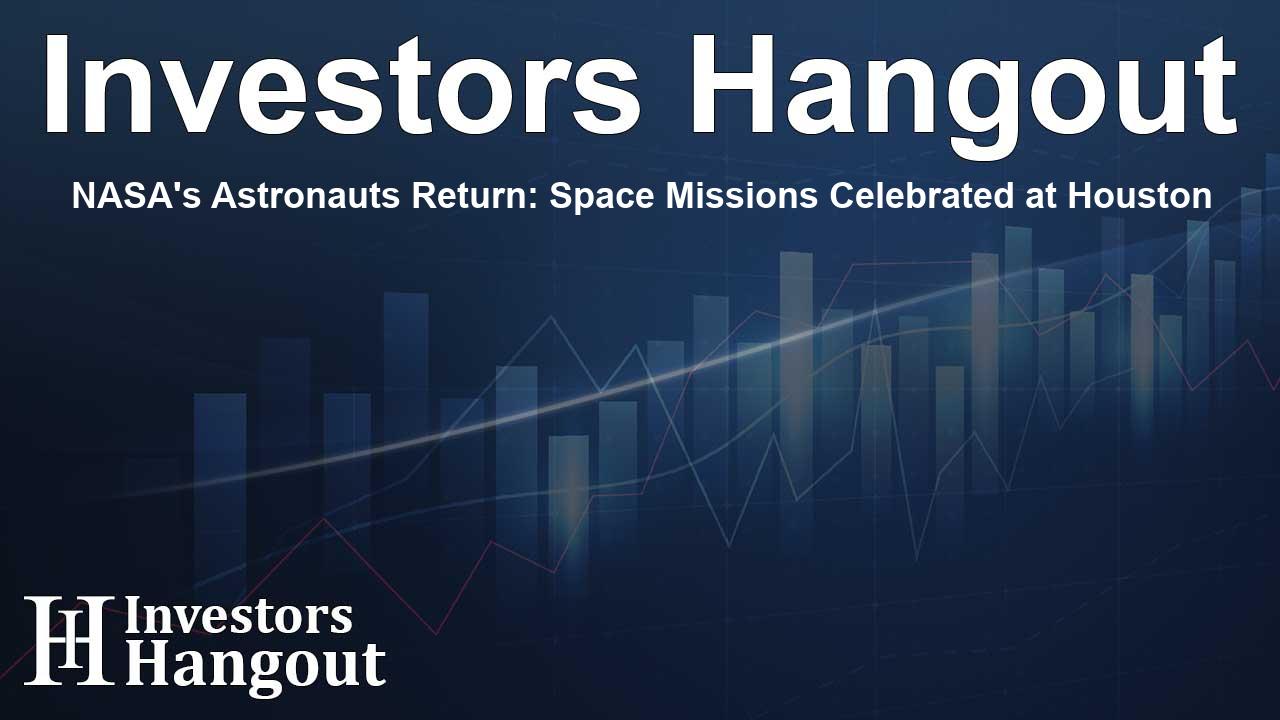NASA's Astronauts Return: Space Missions Celebrated at Houston

NASA's Astronauts Return: Space Missions Celebrated at Houston
Recently, four NASA astronauts engaged in a heartwarming welcome home ceremony at Space Center Houston after completing their remarkable missions aboard the International Space Station (ISS). The excitement among space enthusiasts was palpable as they gathered to celebrate the achievements of these talented individuals.
A Special Ceremony for Returning Heroes
The event featured NASA astronauts Nick Hague, Suni Williams, Butch Wilmore, and Don Pettit, who shared highlights from their extensive missions with the public. This free event, held at NASA Johnson Space Center's visitor center, demonstrated the agency's commitment to engaging with the community and educating the public about ongoing space missions.
Exploring New Frontiers Together
Williams and Wilmore began their journey aboard Boeing's Starliner spacecraft, launched with a United Launch Alliance Atlas V rocket. After successfully reaching the ISS, their teamwork and collaboration led to exciting advancements in scientific research. The astronauts showcased their findings and the importance of their contributions during the awards ceremony.
Journey of Exploration and Discovery
Hague's remarkable flight occurred as he and his cosmonaut colleague Aleksandr Gorbunov launched aboard a SpaceX Falcon 9 rocket, marking an integral moment in NASA's SpaceX Crew-9 mission. Their successful docking with the ISS was a crucial step in advancing human presence in space.
Space Missions: A Testament to Human Ingenuity
Upon returning to Earth, the astronauts left behind a legacy of exploration. Over their missions, Williams and Wilmore covered an astonishing 121,347,491 miles, while Hague and Gorbunov traveled 72,553,920 miles. Their experiences contribute to NASA's ongoing efforts to expand our understanding of space, achieving not only operational goals but also garnering invaluable data for future missions.
Scientific Advances During Expedition 72
The Expedition 72 crew dedicated over 1,000 hours to groundbreaking scientific research and demonstrations in the unique environment of the ISS. Their investigations included enhancing metal 3D printing capabilities and exploring the potential of stem cell technology for treating diseases.
In another innovative project, they prepared the first wooden satellite for deployment, with potential implications for sustainable materials in space. Their work also showcased studies on plant growth in microgravity, information vital for long-term space habitation planning and future missions to Mars.
Captivating the World with Research
Among the noteworthy endeavors, astronauts conducted research on fire behavior in microgravity, revealing critical insights into safety on future flights. Pettit significantly engaged with the public by capturing stunning photographs during his time aboard the station, emphasizing the beauty of science.
Moreover, the Expedition 72 team captured over a million images, shedding light on life aboard the ISS. The partnership between science and art in such explorations serves to inspire a new generation of curious minds eager to explore the cosmos.
The Role of the International Space Station
The ISS continues to symbolize international collaboration, showcasing 24 years of continuous human presence in low Earth orbit. As NASA prepares for deep space missions under the Artemis program, research conducted on the ISS plays a pivotal role in future endeavors to the Moon and Mars.
Looking ahead, the lessons learned and technologies developed aboard the space station are essential to scaling new heights in human exploration. The sustainability of these efforts in low Earth orbit is central to expanding commercial opportunities in space.
Frequently Asked Questions
1. What was the purpose of the recent welcome home ceremony?
The ceremony celebrated the return of NASA astronauts from their missions aboard the ISS, allowing them to share their experiences with the public.
2. What missions did the astronauts participate in?
They participated in various missions, including the Boeing Crew Flight Test and SpaceX Crew-9, contributing significantly to scientific research aboard the ISS.
3. How many miles did the astronauts travel during their missions?
Williams and Wilmore traveled 121,347,491 miles, while Hague and Gorbunov traveled 72,553,920 miles during their respective missions.
4. What types of research did Expedition 72 focus on?
Expedition 72 focused on several areas, including metal 3D printing, stem cell technology, and studying plant growth in microgravity.
5. How long have humans lived aboard the ISS?
Humans have lived and worked continuously aboard the ISS for over 24 years, advancing scientific knowledge and conducting essential research for humanity.
About The Author
Contact Lucas Young privately here. Or send an email with ATTN: Lucas Young as the subject to contact@investorshangout.com.
About Investors Hangout
Investors Hangout is a leading online stock forum for financial discussion and learning, offering a wide range of free tools and resources. It draws in traders of all levels, who exchange market knowledge, investigate trading tactics, and keep an eye on industry developments in real time. Featuring financial articles, stock message boards, quotes, charts, company profiles, and live news updates. Through cooperative learning and a wealth of informational resources, it helps users from novices creating their first portfolios to experts honing their techniques. Join Investors Hangout today: https://investorshangout.com/
The content of this article is based on factual, publicly available information and does not represent legal, financial, or investment advice. Investors Hangout does not offer financial advice, and the author is not a licensed financial advisor. Consult a qualified advisor before making any financial or investment decisions based on this article. This article should not be considered advice to purchase, sell, or hold any securities or other investments. If any of the material provided here is inaccurate, please contact us for corrections.
